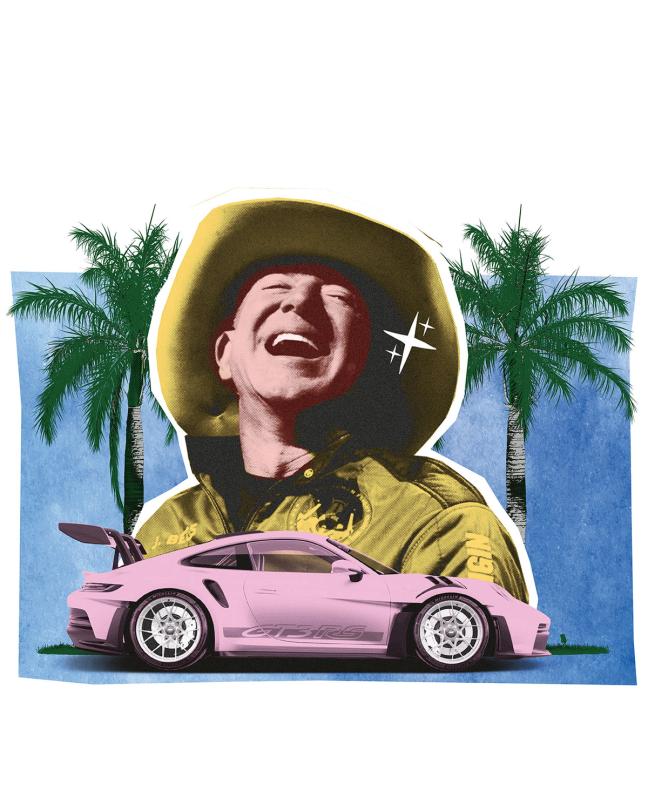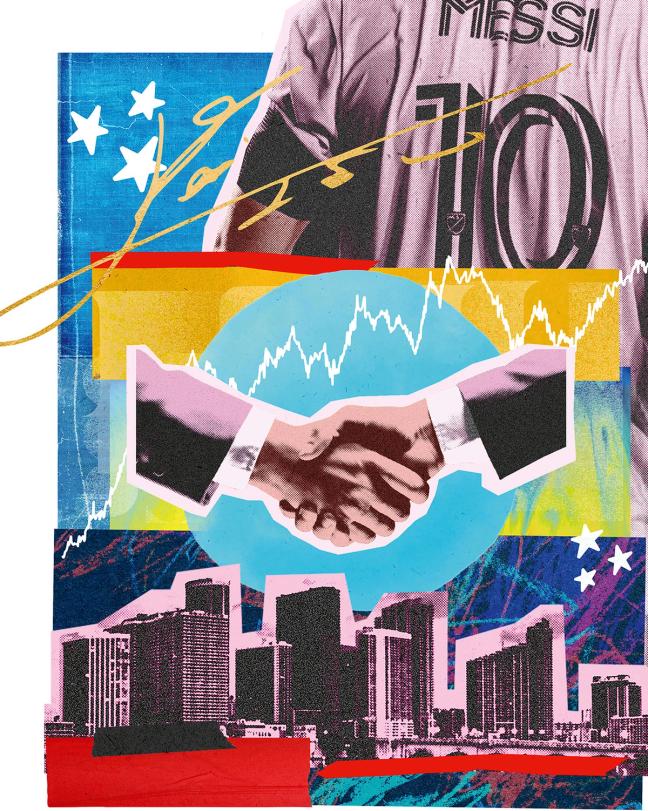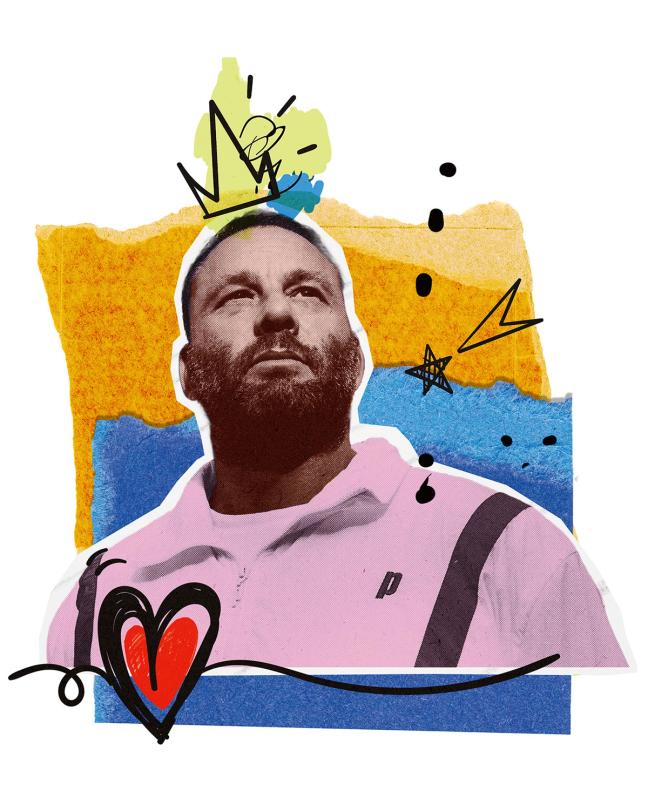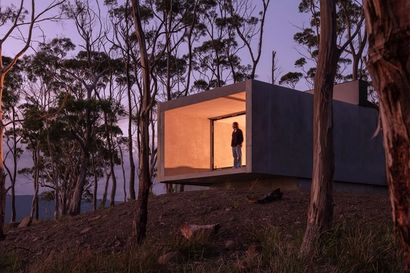Is Miami now the most important city in the Americas?
San Francisco is over, Los Angeles is one big traffic jam and New York has rats like wolves. Miami, the town they once called God’s Waiting Room, is now the destination of the moment, according to its many advocates...
In Miami, they have elevators for your cars – and by ‘cars’ I mean ‘Porsches’, obviously (note the plural). In a building called the Porsche Design Tower – a huge, glistening onyx apartment complex in Sunny Isles Beach – you drive your car right into the blue glowing lift shaft, the glass cabin seals around you, and they beam you up, like Captain Kirk with a slickback, to your condo, penthouse or duplex, just like that. You make the millions and they’ll do the rest.
I have sometimes heard it said that Paris is the city other cities want to be when they grow up: orderly, stately, sophisticated; pale and aloof, and certain in its tastes. If so, then Miami is the city other cities want to be when they’ve stopped caring about silly things like growing up. It is a place that saw how everywhere else was doing things and said, “I’m good, thanks.” A place that has leapfrogged questions of snobbishness and formality and The Done Thing in pursuit of The Good Life, and steaks with sparklers in them, and blue glowing sci-fi car apparators in tower blocks designed by luxury marques. (There’s one by Bentley down here, and one by Armani, too.)
Once upon a time, the joke went that Miami was God’s Waiting Room – a cosmic departures lounge where the old and golf-visored came to kick their heels and slurp sugary margaritas and complain that the enchiladas were too spicy until their time was up. Now it’s a place for people who are tired of waiting. If you could have it all, Miami seems to ask – work, play, food, culture, sport, design, art, money and sunshine, sunshine, sunshine – why on Earth wouldn’t you? This, to millions of people at this very moment, seems to be a purely rhetorical question. Miami is the scene of a modern-day goldrush, a great migration of influence and cash and perception – the remarkable transformation of a city – from a punchline to the cultural and financial powerhouse of the continent – in the time it takes, it sometimes feels, to drive three miles in the Los Angeles rush-hour traffic.
Lionel Messi – Miami’s newest son, who has just taken an apartment in the aforementioned Porsche Design Tower, incidentally – is a case in point. “I have a little thesis on all of this,” says Jack Abraham, a recent convert to the city who the FT described in 2022 as “patient zero” in the city’s great tech migration (we’ll get to that). “I’ve always thought that the best city at any point in American history tends to attract the best sports stars,” Abraham tells me, tanned and youthful and polo-shirted on the end of a transatlantic Zoom call. “You gotta wonder. A guy like Messi can go literally anywhere in the world. And he took a flyer on Miami because he believed in it and knew it was the place he wanted to live.”
Part of the pull for the Argentinian may well have been the wattage of David Beckham, who has been the co-owner of the Inter Miami franchise since 2018, along with Jorge and Jose Mas, the billionaires behind the Miami-based MasTec construction firm. Messi signed for Inter Miami in June, 2023, and helped the team to its first trophy, the 2023 Leagues Cup, almost immediately. Ticket prices increased fivefold in the days after he arrived, according to re-seller StubHub. Stands are packed with newly minted ultras, which bodes well for the city at large, as per the Abraham American City Sports Star Success Ratio Thesis (we’ll work on the name): Messi the flitting, glorious, pink canary down the mine. (It doesn’t hurt, either, that Beckham’s stock is still skyrocketing thanks to his eponymous Netflix docuseries – a project that, like the carnival atmosphere down at Inter Miami, happily blurs the line between sports and entertainment.) “And the rest of Miami’s sports teams are just crushing it, too, right now,” concludes Abraham. Even the colour of the Miami kit, a vibrant, peacocking pink, seems to indicate a city in its pomp.
Abraham himself moved to Miami in mid-2020, during the first summer of the Covid pandemic. It was an accidental migration. The founder, managing partner and CEO at Atomic, the highly successful venture capital fund, Abraham came to visit some friends for what was supposed to be a week-long trip. But then, three days after arriving, he tested positive for Covid and couldn’t get his flight back home to San Francisco. Forced to stay in a succession of Airbnbs across the city, he quickly fell in love with the place. “And I literally never went back. I sold my homes remotely and donated a lot of what I had to charity, because I literally loved it so much.” Cults are less efficient.
“It’s an incredible city,” Abraham continues. “The thing that I discovered is that the people here are incredible. Some of the most productive, successful people in the country. They’re free-thinkers, risk-takers. They’re here from every industry.” Abraham lived in San Francisco for 13 years. “There’s a very strong network of people living in the technology industry there, so literally every conversation, every day, is about technology. It does get really boring and you want some other perspectives.” In Silicon Valley, Abraham recalls, he and his tech buddies would exchange stories of people throwing rocks at the Google commuter buses. “There was kind of a backlash to tech and to success in some of those cities at one point,” he says. But in Miami, with its natural, Republican-inflected promotion of the individual – the American Dream at its most American and dreamy – success (which mostly means money) isn’t a dirty word.
Keith Rabois, a partner at Founders Fund (the Peter Thiel-founded VC firm) and a member of the PayPal Mafia, has become something of an unofficial ambassador to the city. He’s direct and articulate on the subject, punctuating his thoughts with animated slugs of water from a big sports bottle. “Unlike in San Francisco,” Rabois says, “people in Miami raise their kids to emulate success. And I believe that’s critical to the future. If you stigmatise success, you’ll get less of it. And if you encourage it, you’ll get more of it.”
Rabois moved here in 2020. “We had suffered in San Francisco for 23 years,” he says. When he and his family wanted somewhere new to live, due to what he felt were draconian Covid laws and a declining quality of life, Miami was the only rational choice. (It also had a Barry’s Bootcamp, which was a key criterion for Rabois.) “Every other city in the US is in some process of decay, in different ways. San Francisco is in stark decline. New York is in subtle decline. Chicago has completely imploded and disappeared off the map of importance. LA is suffering some of the same trials and tribulations as SF, only a couple of years behind,” he says. “There really isn’t anything left.” In Miami, on the other hand, “I wake up every day and I’m in paradise. I feel like I’m on vacation. I go to work, then I come back – and I’m in paradise again. All within a mile-and-a-half commute.”
In June, 2022, Citadel, the $51bn hedge fund founded by investor-savant Ken Griffin, moved its headquarters from Chicago to Miami. (Griffin, who was born in Florida, cited the rise of violent crime in Illinois as one of the main factors in the move. Miami’s relatively lower crime rates were something many of the people I spoke to mentioned as a plus, in fact. “Less negative distractions,” says Rabois.) In 2019, Carl Icahn, another billionaire hedge funder, moved his office and most of his staff to Miami from New York, where he had been based for decades. Icahn had “grown weary of working” in the city, sources close to him told CNBC at the time. A year earlier, Barry Sternlicht, the visionary investor behind the $100bn Starwood Capital fund, announced he would be moving his offices from Greenwich, Connecticut, to Miami Beach. (These are people who have historically been pretty good, it should be noted, at picking winners.) It feels at times as if Miami itself were some vast golden delta, where all that beautiful liquidity, flowing inevitably from the great American plains on high, can pool and bubble and shimmer on its journey down to the Gulf of Mexico.
“People in Miami raise their kids to emulate success. And I believe that’s critical to the future. If you stigmatise success, you’ll get less of it. And if you encourage it, you’ll get more of it”
With the money people came the property people, of course (the two are now largely indistinguishable), including New York uber-landlords Steve Witkoff and Miki Naftali, and big-ticket developer Harry Macklowe. And with them came the entire ecosystem – the whole smiling butler cohort – that you’d anticipate; law firms like Winston & Strawn, Sidley Austin and King & Spalding, which have all relocated their offices to Miami, as well as a web of auxiliary accountants, boutique consultancies and advisory firms.

On 1 November, 2023, Cooley, a darling law firm of the VC and tech set, announced it was opening an office down here. Rabois quipped on X: “Even the lawyers have figured out where the future is...” A day later, the city snagged not just a big fish, but arguably the biggest fish possible – the type of beast grown inadvertently in an offshore lab in a Jurassic Park spin-off, perhaps, after a foolhardy scientist tipped too many stock options and interns into his feeding pool. Jeff Bezos, the Amazon founder who has recently exuded a very “I’m moving to Miami” vibe anyway, announced he was literally moving to Miami – saying goodbye to Seattle, which he moved to in 1994 and with which his company had become intertwined. “As exciting as the move is, it’s an emotional decision for me,” Bezos said on Instagram. “Seattle, you will always have a piece of my heart.” (One wonders what piece of him Miami will get.)
“I’m excited that he’s decided to move here,” says Rabois, citing the fact that Bezos was born near Miami anyway. “There are a lot of successful people who were born and raised here, and they’re all coming back. There is a generation that felt they had to move somewhere else to achieve their ambitions, but now they’ll all come back. We’ve created a positive feedback loop.”
These high flyers have been shepherded in nimbly by the Mayor of Miami, Francis Suarez – a sort of air-traffic controller for the soul of the city. In December, 2020, Delian Asparouhov, a partner at Founders Fund, tweeted: “Ok guys hear me out, what if we move Silicon Valley to Miami?” Suarez replied simply: “How can I help?” The simple phrase seemed to chime with Miami’s new welcoming, friendly, curious mood – the X equivalent of pulling out a chair at a table to a stranger and doling out the familial spaghetti, just because you like the cut of his jib. It is now Suarez’s near-official motto.
An FT piece on the city, in 2022, photographed him pulling up neon pink and blue socks emblazoned with “How Can I Help?” In 2021, he paid for a billboard in San Francisco that said: “Thinking of moving to Miami? DM me.”
Many from the crypto world heeded the call. In 2021, with Bitcoin soaring to $60,000 a pop, those in hospitality and beyond noticed a new class of millionaire in the city – a newly minted, generally nerdy, mostly young-ish and male crowd. They bought gallons of Champagne and barely drank it. They showed off their nine-digit crypto balances to the waitress. They bought cars and houses and seemed to be as much of the new Miami as anything else. The mega club E11Even began to take payments for its tables and bottles in cryptocurrency in April, 2021, according to the FT, with more than $6m worth of transactions that year. In March, 2021, Sam Bankman-Fried’s crypto exchange FTX paid $135m to secure the naming rights of the Miami Heat’s basketball arena for nearly two decades. In June, 2023, Suarez managed to lure the Bitcoin conference from its perch in Los Angeles to Miami for the first time. The plummet of the crypto-bros fortunes since then – most vividly exemplified by the gargantuan fraud conviction in November, 2023, of Bankman-Fried himself – could have spelled a plummet in Miami’s fortunes, or at least a souring of the mood. But Rabois points out that there were two independent universes at work. “Miami has always been attractive to crypto entrepreneurs. But I never felt that the Miami tech scene was heavily weighted towards crypto at all, actually.”
“I’m moving to Miami”
There is a sense, too, that this remains a singular land of opportunity. Who said bubbles were such a bad thing, anyway, the city seems to ask? Champagne has bubbles. San Pellegrino has bubbles. Hot tubs have bubbles. Put enough bubbles together and you’ve got a zeppelin. Gil Dezer, the pony-tailed Miami real-estate baron, spoke with evangelical zeal on the matter to the FT in June, 2023: “This is not going to end any time soon,” he said. “This is the new world.”
Settlers need houses, and big settlers need big ones – so the new gold rush means a real-estate boom. House prices almost everywhere else are either flatlining or contracting, but not down on the peninsula. Goldman Sachs forecasted double-digit plummets for home prices in traditional tech hubs, like Austin and San Francisco, for 2023 – but a 0.8 per cent gain for Miami and a 2.4 per cent uptick for 2024. When I visited the city in the summer of 2022, the skylines of neighbourhoods like Brickell and Wynwood – once rather unloved industrial and warehouse regions – were thick with construction cranes, while pneumatic drills rang out through the blue air like early-morning roosters.
Wynwood, in fact, is a name often mentioned in the Miami upswing. The area was, for a long time, a no-man’s land – a blank, anonymous grid of storage containers and overpasses and freight trucks. Around ten years ago, it averaged 240,000 visitors a year. Last year, it welcomed a ludicrous 15 million.

There are bougie bistros like Pastis and Kyu, and boutique-ish hotels from Arlo and Moxy. PwC has a new office there, as do Live Nation and Spotify. Founders Fund was an early mover in this regard once again, while a joint venture from Jack Abraham and Keith Rabois – a sort of Shopify on steroids called OpenStore – will be headquartered there as well. “In Wynwood, we scaled to a nearly billion-dollar valuation within 18 months of founding the company, and we’ve attracted some of the most talented people we’ve ever worked with, who have all ended up moving here,” says Abraham.
The Wynwood walls, a technicolor swirl of painted murals and bright graffiti, seem to be a visual metaphor for its new vivid colour. Nearby, the Rubell Museum – housed in a former DEA facility for confiscated narcotics – is a bluechip gallery of the first order. Just opposite it sits Superblue, an immersive, high-concept art space that has become incredibly popular. When I visited, a show let visitors walk inside what felt like a celestial cloud inside a hall of mirrors.
Just north-east of here, the Design District, another modern confection, features handsome architecture and a sort of Futuro-European feel – where a cohort of luxury designer brands line its gleaming sidewalks. It sometimes feels like an AI real-estate brochure brought to life. Craig Robins is the singular visionary here (Miami is the only city where areas have inventors) – a man who, just over a decade ago, saw gold in a slightly tired set of city blocks. “Robins knew the CEO of Fendi,” Abraham says, “and said, 'Can you be my anchor? Please, I know this is a vision – take a gamble and partner with me.'” Once he had Fendi, the story goes, he could lure another luxury marque, and then another, and then another, and now here we are. When I walked around the streets, Chinese and Middle Eastern visitors with immaculate iPhones and statement sneakers queued patiently outside Louis Vuitton and Hermès.
“Our Miami Beach show is situated at the geographic and cultural nexus of the Americas”
The artistic and creative energy of the city, long felt in its colourful meeting of cultures and arrivistes, was given international heft by the arrival of Art Basel Miami Beach, in 2002. The renowned art fair was originally set up in Basel, Switzerland, in 1970, ostensibly as a way for gallerists to exhibit their artists’ work to potential buyers – but also as an excuse for wining and dining, hobnobbing, cheek-kissing, name-dropping, shoulder-rubbing and various other hobbies that can be easily expensed. In 2001, when the fair wanted to expand to a new destination in the Americas, many art world grandees were surprised that Miami Beach was selected – but the move now seems like an inspired choice. Whereas New York was swimming with arty sharks and big dealers and tony museums and galleries, Miami was relatively unsullied in this department, meanwhile its reliable climate and international aspect made it highly approachable for the new jet set.
“Art Basel Miami Beach is always so magnetic, full of energy and vibrancy,” says Vincenzo de Bellis, director of fairs and exhibition platforms at Art Basel. “Our Miami Beach show is situated at the geographic and cultural nexus of the Americas,” he says, which gives it a unique flavour compared to its siblings in Basel, Hong Kong and Paris. One interesting element he touches on is the sheer openness of the art collectors in the city. “All the great collectors of Miami, starting from many years ago, showed the world that it is possible to open your house and show your collection,” he says. “This generosity and welcoming approach influenced the whole art world. What we [now] consider a given – visiting private collections during fairs – has been strongly driven by the Miami community and this is a fantastic legacy of the city.”

Hospitality, in fact, is the order of the day. Art Basel Miami Beach is a dense matrix of happenings, pre-happenings, after happenings, and after-after happenings – often with very good canapés and other people’s Champagne. Many grandees attend multiple sponsored breakfasts per morning. The three-day bash is always a name-dropper’s charter: Diplo, Pharrell Williams, Leonardo DiCaprio, Venus Williams and Sylvester Stallone were all notable attendees (and buyers) in 2022, to pick a few names almost at random. A friend described its recent atmosphere as “Burning Man with Larry Gagosian” – meanwhile Vanity Fair repeated a surely apocryphal anecdote in its write-up in 2022: “An exhibitor literally found a giant brick of cocaine in the sand outside of the Deauville [hotel] one year. And they snorted some of it, they packaged it back up, and they buried it – and they came back and found it the second year. That’s a true story.” (A true story for the old Miami, perhaps.)
“Miami has David Grutman: swaying palms, famous faces, beautiful people, and good times above all else”
Which brings us to the final, and perhaps most frothy, bubble in the great Miami Venn diagram: its unique relationship to food, to hospitality and to parties. And you can’t talk about these things without talking about David Grutman. I interviewed Grutman, who’s often called the king of Miami’s hospitality scene, in 2022, and I hope you’ll forgive the self-plagiarism here: it was hard enough to sum up his popularity and influence the first time round. “England has the Queen: afternoon tea, Buckingham Palace, stiff upper lip, corgis. And Miami has David Grutman: swaying palms, famous faces, beautiful people, and good times above all else. Grutman didn’t put Miami on the map, of course – but he did make the map look more beautiful, more enticing, more shimmering, more Miami. His empire, Groot Hospitality, spans two gigantic clubs (the iconic LIV and Story), six restaurants and one hotel in the city alone. But, once you’re here, it feels bigger than simply the buildings themselves. Yes, the Beckhams and the Kardashians know and love Grutman. But so do the taxi drivers I speak to, and the kids playing soccer in Flamingo Park, and the guy selling tacos round the corner. In this way, you could call him the unofficial Mayor of Miami, I suppose – but that might be tricky for the actual Mayor, who he is friends with, of course, and who messages Grutman several times on the day we meet. Well, him and just about everybody else...”
Grutman is known for his ambitious, playful, peak-Miami projects – like the aptly named Goodtime Hotel, which he owns with Pharrell Williams; or Papi Steak, where you can get your tomahawk presented to you in a golden suitcase, and which is, per square foot, the highest-revenue restaurant in the entirety of the US. His success has been Miami’s success, too.
“I owe my career to Miami and Miami Beach,” he says. “I’ll always be thankful for what this city has given me. It has been incredible seeing just how much has changed over the past 10, 20, 30 years. I grew up in Naples, on Florida’s West Coast, but always wanted to be in Miami. Always.”

In modern Miami, he says, “hospitality and lifestyle have almost completely merged. Old-school hospitality would focus on the way things were done – the established way of things. This new age is about thinking broader, and creating experiences that tap on all elements of lifestyle. This includes entertainment. It includes celebrity-adjacency. It includes design, sound, art... the list goes on. But no matter what, whether it was two decades ago or now [in 2023], the goal is to give people something to remember – and something to want again, because they had such a great time.” This is a good mantra for a successful Miami restaurant – but an even better one for the city at large.
“Miami is for go-getters. Self-motivated people. People who actually want to make dreams a reality instead of continuing to just fantasise,” he concludes. “It’s ahead of the curve; it’s a city with its own kind of energy, tonnes of sun, and a certain type of modernity you won’t find anywhere else.”
John Terzian, the founder of The h.wood Group, a constellation behind LA mega-spots like Delilah and The Nice Guy, agrees that there’s something in the water. “While Los Angeles is my home, Miami has always felt like a second home,” he says. “I have always loved the feeling in the air the second I arrive in Miami. There is no better place in the world with the mix of cuisine, nightlife and amazing people.” Terzian has chosen to open his third Delilah site (after Los Angeles and Las Vegas) in Miami, down on the waterfront in Brickell. “It will have a strong mix of fine dining and entertainment intertwined. While all of our properties create an immersive experience, Delilah Miami is a true fusion of flavours and entertainment that creates a memorable night out guests won’t get anywhere else.” There are two yacht slips out the front of the restaurant – an indication of the continental air of the place and its waterborne clientele. Part of his excitement, he says, is the sheer energy and attitude of the city: “Miami has a lot more of a ‘live life’ type of feel in a good way, rather than all work.”
Rabois certainly agrees. He thinks he has relaxed, a bit, perhaps. In San Francisco he was a wine connoisseur. Now, his drink of choice is tequila. Grutman believes it’s a city of genuine self-discovery: “You can really just be exactly who you want to be in this place – I really believe that.” Abraham has taken up wake-surfing and e-foiling. He is more “optimistic” in general. Things work better down here, they say. There is less time spent in traffic. They hang out with people they might not have done before. DJs and sports stars; restaurateurs and real-estate tycoons. For a long time, Rabois’s only real challenge, he says, was to convince other people to move down here with him. That’s becoming less and less of an issue. “Now, my one-line pitch to them is simple,” he says. “I just ask them: Do you want to be happy?”
This feature was taken from Gentleman’s Journal’s Winter 2023 issue. Read more about it here.
Want more long-reads? We pay a visit to Bryan Cranston...

Become a Gentleman’s Journal Member?
Like the Gentleman’s Journal? Why not join the Clubhouse, a special kind of private club where members receive offers and experiences from hand-picked, premium brands. You will also receive invites to exclusive events, the quarterly print magazine delivered directly to your door and your own membership card.


